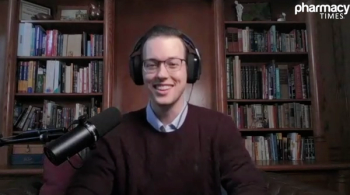
Pomalidomide Labeled an Advance in Multiple Myeloma
The combination of pomalidomide and a steroid significantly improved outcomes for patients with multiple myeloma who have exhausted other novel therapies, marking what researchers say is a notable advancement for a sizable proportion of those treated for the disease.
The combination of pomalidomide and a steroid significantly improved outcomes for patients with multiple myeloma who have exhausted other novel therapies, marking what researchers say is a notable advancement for a sizable proportion of those treated for the disease.
In a phase III trial, pomalidomide given with low-dose dexamethasone nearly doubled median progression-free survival (PFS) to 15.7 weeks when compared with high-dose dexamethasone at a median PFS of 8.0 weeks (HR = 0.45; P < .001), according to findings discussed Sunday during a press briefing at the 54th Annual Meeting of the American Society of Hematology at the Georgia World Congress Center in Atlanta.
Median overall survival (OS) had not yet been reached in the pomalidomide arm, but is expected to be about 11-12 months, said Meletios A. Dimopoulos, MD, lead author and professor and chair of the Department of Clinical Therapeutics at Alexandra Hospital in Athens, Greece. The median OS was 34 weeks in the control arm (HR = 0.53; P <.001).
Dimopoulos said in an interview that researchers are excited to have an option for patients who become resistant to lenalidomide (Revlimid) and bortezomib (Velcade), which often are combined with dexamethasone as front-line therapy in the United States.
He said that although novel therapies have dramatically improved the median survival of the average patient with multiple myeloma from no more than three years approximately a decade ago to more than seven or eight years today, patients ultimately relapse. Currently, patients who are resistant or refractory to the novel agents often are offered high-dose dexamethasone as a palliative treatment because there are no alternatives, he said.
“More and more patients with myeloma today are being treated with novel agents,” Dimopoulous said. “The majority of patients with myeloma will end up becoming refractory to bortezomib and lenalidomide, so this is a very large patient population.”
He said resistance is defined as disease progression with 60 days of treatment, and that patients who are refractory to current therapies experience PFS of no more than five months and OS of approximately eight months.
“Clearly, there is a need to salvage patients who have acquired resistance,” he said. “The goal is to be able to provide further treatment for patients with myeloma who have exhausted all available therapies.”
Patients who enrolled in the clinical trial, which was conducted from March 2011 to September 2012, had been heavily pretreated. “The median number of prior therapies was five,” Dimopoulous said.
In all, 455 patients were randomized 2:1 to receive pomalidomide plus low-dose dexamethasone (n = 302) versus high-dose dexamethasone (n = 153). In the experimental arm, each 28-day cycle consisted of pomalidomide daily on days 1-21 at a dosage of 4 mg/d plus dexamethasone on days 1, 8, 15, and 22 at 40 mg for participants age 75 or younger and 20 mg for those over 75. In the control arm, patients received dexamethasone on days 1-4, 9-12, 17-20 at the same age-stratified dosages.
The combination regimen was well tolerated, Dimopoulos said, although there were toxicities reported in both arms. The frequency of grade 3/4 hematologic toxicities was higher in the pomalidomide arm compared with the control group for neutropenia (42% vs 15%, respectively) and febrile neutropenia (7% vs 0%), but lower for thrombocytopenia (21% vs 24%).
Of those who discontinued therapy, progressive disease was the primary reason, with 35% of patients who took pomalidomide discontinuing and 49% in the control group. In all, 25% of patients in the pomalidomide group and 38% in the control group died, primarily due to progressive disease and infections.
In October, the Data Safety Monitoring Board determined that the pomalidomide study met its primary endpoint of improvement in PFS and crossed the superiority boundary for OS.
The FDA is reviewing a New Drug Application for pomalidomide in combination with dexamethasone, with a decision expected by February 10, 2013, according to Celgene Corporation, which is developing the drug. The company also has applied to the European Medicines Agency for marketing authorization and anticipates a decision in the second half of 2013.
SOURCE:
Reference
Dimopoulos MA, Lacy MQ, Moreau P, et al. Pomalidomide in combination with low-dose dexamethasone: demonstrates a significant progression free survival and overall survival advantage, in relapsed/refractory MM: a phase iii, multicenter, randomized, open-label study. Presented at: 54th ASH Annual Meeting; December 8-11, 2012; Atlanta, GA. Abstract LBA-6.
Newsletter
Stay informed on drug updates, treatment guidelines, and pharmacy practice trends—subscribe to Pharmacy Times for weekly clinical insights.













































































































































































































